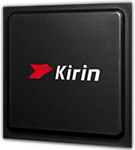
Qualcomm Snapdragon 888 Benchmark, Test and specs
Last updated:
The Qualcomm Snapdragon 888 has 8 cores with 8 threads and is based on the 8. gen of the Qualcomm Snapdragon series. The processor was released in Q1/2021. The Qualcomm Snapdragon 888 scores 1,088 points in the Geekbench 5 single-core benchmark. In the Geekbench 5 multi-core benchmark, the result is 3,250 points.

| Name: | Qualcomm Snapdragon 888 |
|---|---|
| Family: | Qualcomm Snapdragon (102) |
| CPU group: | Qualcomm Snapdragon 888 (2) |
| Architecture: | Kryo 680 |
| Segment: | Mobile |
| Generation: | 8 |
| Predecessor: | -- |
| Successor: | Qualcomm Snapdragon 8 Gen 1 |
CPU Cores and Base Frequency
The Qualcomm Snapdragon 888 has 8 CPU cores and can calculate 8 threads in parallel. The clock frequency of the Qualcomm Snapdragon 888 is 2.84 GHz. The number of CPU cores greatly affects the speed of the processor and is an important performance indicator.
| CPU Cores / Threads: | 8 / 8 |
|---|---|
| Core architecture: | hybrid (Prime / big.LITTLE) |
| A-Core: | 1x Kryo 680 Prime |
| B-Core: | 3x Kryo 680 Gold |
| C-Core: | 4x Kryo 680 Silver |
| Hyperthreading / SMT: | No |
|---|---|
| Overclocking: | No |
| A-Core Frequency: | 2.84 GHz |
| B-Core Frequency: | 2.42 GHz |
| C-Core Frequency: | 1.80 GHz |
Artificial Intelligence and Machine Learning
Processors with the support of artificial intelligence (AI) and machine learning (ML) can process many calculations, especially audio, image and video processing, much faster than classic processors. Algorithms for ML improve their performance the more data they have collected via software. ML tasks can be processed up to 10,000 times faster than with a classic processor.
| AI hardware: | Qualcomm AI engine |
|---|---|
| AI specifications: | Hexagon 780 @ 26 TOPS |
Internal Graphics
The Qualcomm Snapdragon 888 has integrated graphics, called iGPU for short. Specifically, the Qualcomm Snapdragon 888 uses the Qualcomm Adreno 660, which has -- texture shaders and -- execution units. The iGPU uses the system's main memory as graphics memory and sits on the processor's die.
| GPU name: | Qualcomm Adreno 660 |
|---|---|
| GPU frequency: | 0.84 GHz |
| GPU (Turbo): | No turbo |
| Compute units: | -- |
| Shader: | -- |
| Hardware Raytracing: | No |
| Release date: | Q1/2021 |
| Max. displays: | 0 |
|---|---|
| Generation: | 6 |
| Direct X: | 12.1 |
| Technology: | 5 nm |
| Max. GPU Memory: | -- |
| Frame Generation: | No |
Hardware codec support
A photo or video codec that is accelerated in hardware can greatly accelerate the working speed of a processor and extend the battery life of notebooks or smartphones when playing videos.
| h265 / HEVC (8 bit): | Decode / Encode |
|---|---|
| h265 / HEVC (10 bit): | Decode / Encode |
| h264: | Decode / Encode |
| VP8: | Decode / Encode |
| VP9: | Decode / Encode |
| AV1: | No |
|---|---|
| AVC: | Decode |
| VC-1: | Decode |
| JPEG: | Decode / Encode |
Memory & PCIeThe processor can use up to 16 GB memory in 4 (Quad Channel) memory channels. The maximum memory bandwidth is 51.2 GB/s. The memory type as well as the amount of memory can greatly affect the speed of the system. |
|
| Memory type: | Memory bandwidth: |
|---|---|
| LPDDR5-6400 | 51.2 GB/s |
| Max. Memory: | 16 GB |
| Memory channels: | 4 (Quad Channel) |
| ECC: | No |
| PCIe: | |
| PCIe Bandwidth: | -- |
Thermal ManagementThe thermal design power (TDP for short) of the processor is . The TDP specifies the necessary cooling solution that is required to cool the processor sufficiently. The TDP usually gives a rough idea of the actual power consumption of the CPU. |
|
|---|---|
| TDP (PL1 / PBP): | |
| TDP (PL2): | -- |
| TDP up: | -- |
| TDP down: | -- |
| Tjunction max.: | -- |
Technical details
The Qualcomm Snapdragon 888 is made in 5 nm. The smaller the manufacturing process of a CPU, the more modern and energy-efficient it is. Overall, the processor has 9.00 MB cache. A large cache can greatly speed up the processor's speed in some cases such as games.
| Technology: | 5 nm |
|---|---|
| Chip design: | Chiplet |
| Socket: | -- |
| L2-Cache: | 1.00 MB |
| L3-Cache: | 8.00 MB |
| AES-NI: | No |
| Operating systems: | Android |
| Virtualization: | None |
|---|---|
| Instruction set (ISA): | Armv8-A (64 bit) |
| ISA extensions: | -- |
| Release date: | Q1/2021 |
| Release price: | -- |
| Part Number: | SM8350 |
| Documents: | Technical data sheet |
Rate this processor
Benchmark results

The benchmark results for the Qualcomm Snapdragon 888 have been carefully checked by us. We only publish benchmark results that have been created by us or that have been submitted by a visitor and then checked by a team member. All results are based on and fullfill our benchmark guidelines.
Screenshots:
Screenshots:
Geekbench 5, 64bit (Single-Core)
Geekbench 5 is a cross plattform benchmark that heavily uses the systems memory. A fast memory will push the result a lot. The single-core test only uses one CPU core, the amount of cores or hyperthreading ability doesn't count.

|
Intel Core i7-8709G
4C 8T @ 4.10 GHz |
||

|
Intel Pentium Gold 7505
2C 4T @ 3.50 GHz |
||
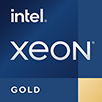
|
Intel Xeon Gold 5222
4C 8T @ 3.90 GHz |
||
|
|
Qualcomm Snapdragon 888
8C 8T @ 2.84 GHz |
||

|
Intel Xeon D-1747NTE
10C 20T @ 3.50 GHz |
||

|
Intel Core i5-1034G1
4C 8T @ 3.60 GHz |
||

|
Intel Core i5-1035G1
4C 8T @ 3.60 GHz |
||
Geekbench 5, 64bit (Multi-Core)
Geekbench 5 is a cross plattform benchmark that heavily uses the systems memory. A fast memory will push the result a lot. The multi-core test involves all CPU cores and taks a big advantage of hyperthreading.

|
Intel Core i3-9300T
4C 4T @ 3.40 GHz |
||

|
Intel Core i7-970
6C 12T @ 3.20 GHz |
||
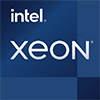
|
Intel Xeon E5-2623 v4
4C 8T @ 2.90 GHz |
||
|
|
Qualcomm Snapdragon 888
8C 8T @ 2.84 GHz |
||

|
Intel Xeon D-2123IT
4C 8T @ 2.40 GHz |
||

|
Intel Core i3-9100F
4C 4T @ 3.80 GHz |
||

|
Intel Core i3-9100
4C 4T @ 3.80 GHz |
||
Geekbench 6 (Single-Core)
Geekbench 6 is a benchmark for modern computers, notebooks and smartphones. What is new is an optimized utilization of newer CPU architectures, e.g. based on the big.LITTLE concept and combining CPU cores of different sizes. The single-core benchmark only evaluates the performance of the fastest CPU core, the number of CPU cores in a processor is irrelevant here.

|
Qualcomm Snapdragon 865
8C 8T @ 2.84 GHz |
||

|
Intel Core i5-5675C
4C 4T @ 3.60 GHz |
||

|
Intel Core i5-7400
4C 4T @ 3.50 GHz |
||
|
|
Qualcomm Snapdragon 888
8C 8T @ 2.84 GHz |
||

|
Intel Core i5-9500TE
6C 6T @ 3.60 GHz |
||
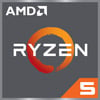
|
AMD Ryzen 5 3400G
4C 8T @ 4.20 GHz |
||

|
Intel Core i7-6820HK
4C 8T @ 3.60 GHz |
||
Geekbench 6 (Multi-Core)
Geekbench 6 is a benchmark for modern computers, notebooks and smartphones. What is new is an optimized utilization of newer CPU architectures, e.g. based on the big.LITTLE concept and combining CPU cores of different sizes. The multi-core benchmark evaluates the performance of all of the processor's CPU cores. Virtual thread improvements such as AMD SMT or Intel's Hyper-Threading have a positive impact on the benchmark result.

|
MediaTek Dimensity 1200
8C 8T @ 3.00 GHz |
||
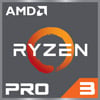
|
AMD Ryzen 3 PRO 1300
4C 4T @ 3.60 GHz |
||

|
Intel Core i5-4460
4C 4T @ 3.30 GHz |
||
|
|
Qualcomm Snapdragon 888
8C 8T @ 2.84 GHz |
||
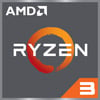
|
AMD Ryzen 3 4300U
4C 4T @ 3.70 GHz |
||

|
Intel Core i5-6440EQ
4C 4T @ 3.00 GHz |
||

|
MediaTek Dimensity 1300
8C 8T @ 3.00 GHz |
||
iGPU - FP32 Performance (Single-precision GFLOPS)
The theoretical computing performance of the internal graphics unit of the processor with simple accuracy (32 bit) in GFLOPS. GFLOPS indicates how many billion floating point operations the iGPU can perform per second.

|
Intel Core i5-1250P
Intel Iris Xe Graphics 80 (Alder Lake) @ 1.40 GHz |
||

|
Intel Core i5-12600H
Intel Iris Xe Graphics 80 (Alder Lake) @ 1.40 GHz |
||

|
Intel Core i5-13600HE
Intel Iris Xe Graphics 80 (Alder Lake) @ 1.40 GHz |
||
|
|
Qualcomm Snapdragon 888
Qualcomm Adreno 660 @ 0.84 GHz |
||

|
Qualcomm Snapdragon 888+
Qualcomm Adreno 660 AV1 @ 0.84 GHz |
||

|
Apple A15 Bionic (5-GPU)
Apple A15 (5 GPU Cores) @ 1.34 GHz |
||

|
AMD Ryzen 5 5600GT
AMD Radeon RX Vega 7 (Renoir) @ 1.90 GHz |
||
AnTuTu 9 Benchmark
The AnTuTu 9 benchmark is very well suited to measuring the performance of a smartphone. AnTuTu 9 is quite heavy on 3D graphics and can now also use the "Metal" graphics interface. In AnTuTu, memory and UX (user experience) are also tested by simulating browser and app usage. AnTuTu version 9 can compare any ARM CPU running on Android or iOS. Devices may not be directly comparable when benchmarked on different operating systems.
In the AnTuTu 9 benchmark, the single-core performance of a processor is only slightly weighted. The rating is made up of the multi-core performance of the processor, the speed of the working memory, and the performance of the internal graphics.
In the AnTuTu 9 benchmark, the single-core performance of a processor is only slightly weighted. The rating is made up of the multi-core performance of the processor, the speed of the working memory, and the performance of the internal graphics.

|
Qualcomm Snapdragon 888+
8C 8T @ 3.00 GHz |
||

|
Apple A15 Bionic (5-GPU)
6C 6T @ 3.23 GHz |
||

|
MediaTek Dimensity 8000
8C 8T @ 2.75 GHz |
||
|
|
Qualcomm Snapdragon 888
8C 8T @ 2.84 GHz |
||

|
MediaTek Dimensity 8100
8C 8T @ 2.85 GHz |
||

|
Apple A15 Bionic (4-GPU)
6C 6T @ 3.23 GHz |
||

|
Google Tensor G2
8C 8T @ 2.85 GHz |
||
AnTuTu 8 Benchmark
The AnTuTu 8 Benchmark measures the performance of a SoC. AnTuTu benchmarks the CPU, GPU, Memory as well as the UX (User Experience) by simulating browser and app usage. AnTuTu can benchmark any ARM CPU that runs under Android or iOS. Devices may not be directly compareable if the benchmark has been performed under different operating systems.
In the AnTuTu 8 benchmark, the single-core performance of a processor is only slightly weighted. The evaluation consists of the multi-core performance of the processor, the speed of the RAM and the performance of the internal graphics.
In the AnTuTu 8 benchmark, the single-core performance of a processor is only slightly weighted. The evaluation consists of the multi-core performance of the processor, the speed of the RAM and the performance of the internal graphics.

|
Apple A12Z Bionic
8C 8T @ 2.49 GHz |
||
|
|
Qualcomm Snapdragon 888
8C 8T @ 2.84 GHz |
||

|
Apple A12X Bionic
8C 8T @ 2.49 GHz |
||

|
Qualcomm Snapdragon 888+
8C 8T @ 3.00 GHz |
||
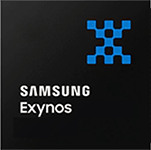
|
Samsung Exynos 1080
8C 8T @ 2.80 GHz |
||
|
|
HiSilicon Kirin 9000
8C 8T @ 3.13 GHz |
||

|
Qualcomm Snapdragon 870
8C 8T @ 3.20 GHz |
||
Estimated results for PassMark CPU Mark
Some of the CPUs listed below have been benchmarked by CPU-monkey. However the majority of CPUs have not been tested and the results have been estimated by a CPU-monkey’s secret proprietary formula. As such they do not accurately reflect the actual Passmark CPU mark values and are not endorsed by PassMark Software Pty Ltd.

|
AMD FX-8100
8C 8T @ 3.70 GHz |
||

|
Intel Core i7-4900MQ
4C 8T @ 3.80 GHz |
||

|
Intel Core i5-8260U
4C 8T @ 2.60 GHz |
||
|
|
Qualcomm Snapdragon 888
8C 8T @ 2.84 GHz |
||

|
Intel Core i3-8100B
4C 4T @ 3.60 GHz |
||

|
Intel Core i5-8265U
4C 8T @ 2.30 GHz |
||

|
AMD EPYC Embedded 3101
4C 4T @ 2.10 GHz |
||
Performance for Artificial Intelligence (AI) and Machine Learning (ML)
Processors with the support of artificial intelligence (AI) and machine learning (ML) can process many calculations, especially audio, image and video processing, much faster than classic processors. The performance is given in the number (trillions) of arithmetic operations per second (TOPS).

|
Qualcomm Snapdragon 888+
8C 8T @ 3.00 GHz |
||

|
Apple M2 Ultra (60-GPU)
24C 24T @ 0.66 GHz |
||

|
Apple M2 Ultra (76-GPU)
24C 24T @ 0.66 GHz |
||
|
|
Qualcomm Snapdragon 888
8C 8T @ 2.84 GHz |
||

|
Qualcomm Snapdragon 8 Gen 2 for Galaxy
8C 8T @ 3.36 GHz |
||

|
Qualcomm Snapdragon 8 Gen 2
8C 8T @ 3.36 GHz |
||

|
Qualcomm Snapdragon 8 Gen 1
8C 8T @ 3.00 GHz |
||
Benchmarks

Geekbench 5 (SC)
2,488 entries
2,488 entries

Geekbench 5 (MC)
2,461 entries
2,461 entries

Geekbench 6 (SC)
1,755 entries
1,755 entries

Geekbench 6 (MC)
1,703 entries
1,703 entries

FP32 SP (iGPU)
2,039 entries
2,039 entries

AnTuTu 9 Benchmark
90 entries
90 entries

AnTuTu 8 Benchmark
118 entries
118 entries
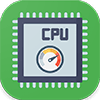
PassMark CPU-Mark
2,392 entries
2,392 entries

AI / ML Performance
116 entries
116 entries
Description of the processor
The Snapdragon 888 from Qualcomm is an eighth-generation mobile processor based on a Prime / big.LITTLE architecture. This means that the processor has 3 different core types available. It starts with the high-performance Prime core (Kryo 680 Prime), which is installed here and has a clock frequency of 2.84 gigahertz. This is followed by the 3 performance or prime cores (Kryo 680 Gold), which clock at 2.42 gigahertz, and the conclusion is formed by the 4 efficiency or LITTLE cores (Kryo 680 Silver), which clock at 1.80 clock gigahertz. Depending on the required performance, the corresponding cores are used. The point of it all is that if only a little computing power is required, only the lower-performing cores are used to save power and thus extend the battery life of the device in which the Qualcomm Snapdragon 888 is used.In benchmark Geekbench 5, the Qualcomm Snapdragon 888 achieves a single-core score of 1102 points and in the multi-core benchmark it is 3540 points.
The in-house Qualcomm Adreno 660 is used as the internal graphics unit in the Qualcomm Snapdragon 888. Unfortunately, not all details are known about this graphics unit, but it is certain that it is manufactured using the 5-nanometer process and that the clock frequency is 840 megahertz.
The Qualcomm Snapdragon 888 supports LPDDR4X-4266 and the more modern LPDDR5-3200 type RAM. The size of the main memory depends on the device, but unfortunately Qualcomm does not specify a maximum size.
The Qualcomm Snapdragon 888 came out in the first quarter of 2021 and is a very popular processor. You can see that from the fact that it is used in many devices. Here are a few examples: Oppo K10 Pro, OnePlus 9RT, ASUS Zenfone 8, Samsung Galaxy S21 FE5G or the Huawei P50 Pro.
Popular comparisons
back to index



